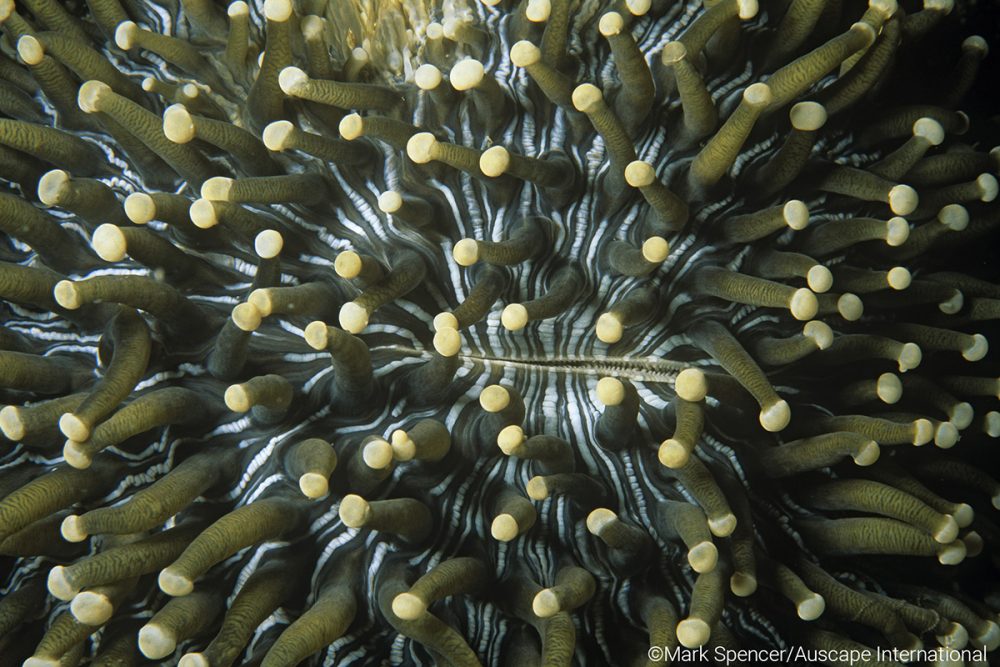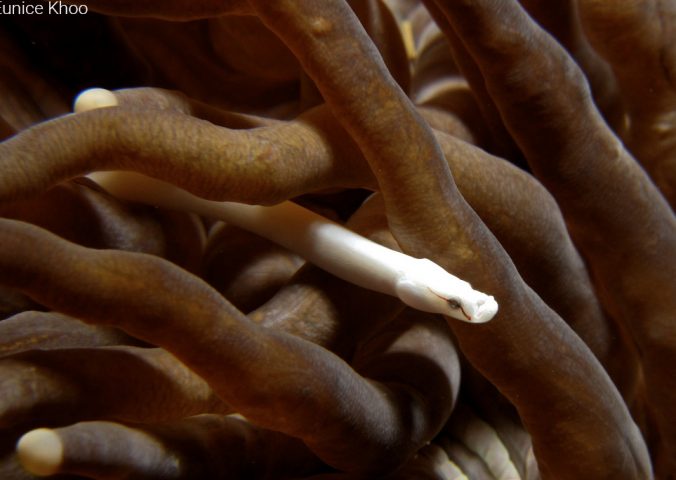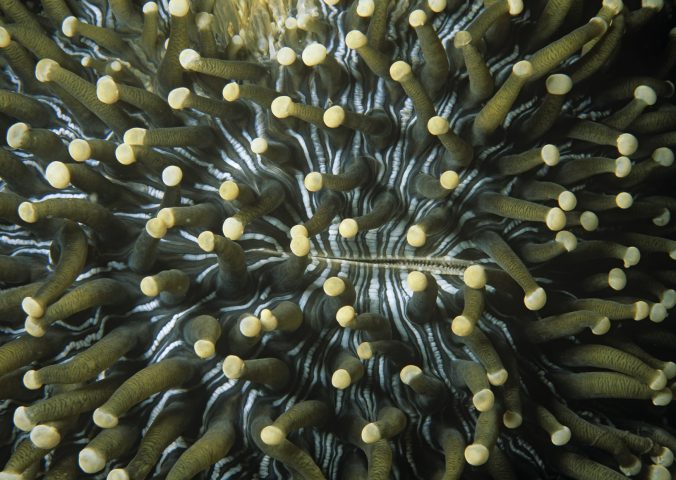About
Unlike many Scleractinian corals, adult polyps of Heliofungia are solitary and free living.
This means that the polyps, which may reach around 21cm across are not actually attached to substrate but are mobile. The polyp is adorned with a large number of long tubular tentacles, each of which possesses a swollen, alternatively coloured tip. These tentacles catch small morsels of food such as zooplankton or small fish and guide them towards the polyp’s central mouth.
The morphology of this species makes it a suitable home for many reef species such as the popcorn shrimp (Periclimenes kororensis). Unfortunately, it is also attractive to those in the live coral trade, through which it is heavily exploited.
- Order: Scleractinia
- Family: Fungiidae
- Trend: unknown
- Depth Range (m): 1 - 25
EDGE Score
Distribution
This species is found in the central Indo-Pacific, northwest, north and eastern Australia, south Japan and South China Sea, oceanic West Pacific.
Habitat and Ecology
This coral is a single, free-living polyp, typically found on reef flats and gentle reef slopes down to 25m. As with many mushroom corals they reproduce asexually by budding to form a new polyp.
Other free living corals in the family have been shown to relocate as a response to contact with toxic sponges. Such a flight response is important in solitary corals as these are more likely to come into contact with competing organisms. It is hypothesized that polyp inflation is the mechanism through which motile corals travel.






